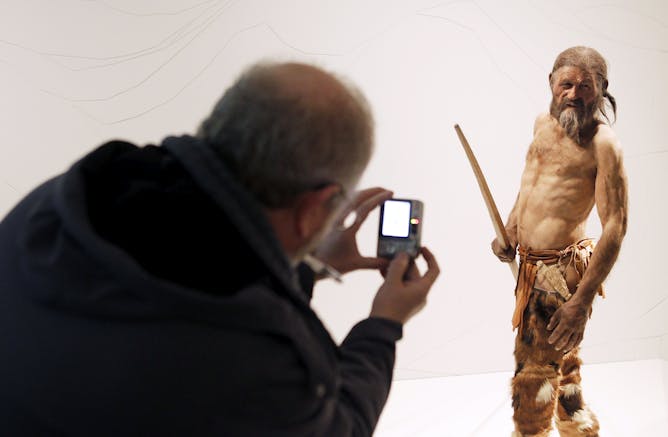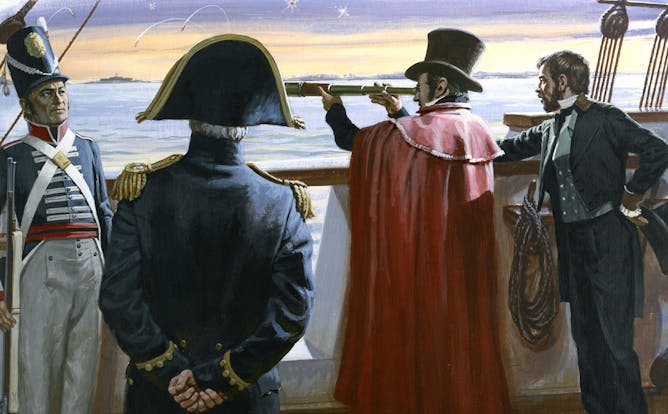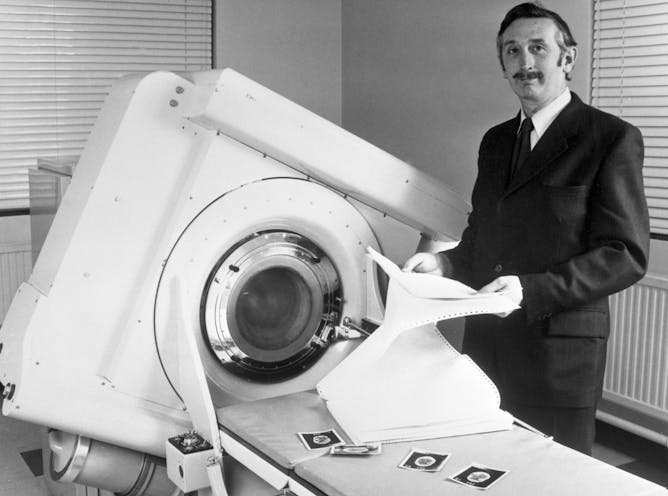|
The closest I’ve come to any form of body art is applying henna to my hands. For me, henna is not just a simple adornment – it’s part of a sacred ritual during religious festivals, weddings or other ceremonies. Body adornment was also part of ancient cultures, often in the form of tattoos.
It’s for this reason that many researchers found the discovery three decades ago of Ötzi the Iceman, adorned with 61 tattoos, significant. Whether those tattoos on the 5,300-year-old mummy were part of healing rituals, religious beliefs or both is a matter of speculation.
While what Ötzi the Iceman’s tattoos meant to him might remain a mystery, Arizona State University’s Allison Hawn, a tattoo historian, writes that the religious and healing aspects of tattoos for ancient cultures have been well documented. From thousands-year-old mummified remains in Egypt to Machine Gun Kelly’s ample ink, tattoos can still hold sacred meaning.
This week we also liked articles about the eccentric engineer who invented the CT scanner, Francis Scott Key’s support for making freed Black people move to Africa and Walt Disney’s urban idealism.
|

A man takes a picture of a statue representing the 5,300-year-old mummy named Ötzi, discovered in the Italian Alps 30 years ago.
Andrea Solero/AFP via Getty Images
Allison Hawn, Arizona State University
When the 5,300-year-old mummy of Ötzi the Iceman was found 30 years ago, researchers found 61 tattoos on it. A scholar explains how tattoos have been a sacred part of many cultures across the world.
|

A painting depicting Francis Scott Key aboard the British ship HMS Tonnant viewing Fort McHenry during the Battle of Baltimore on Sept. 14, 1814.
Ed Vebell/Getty Images
Bennett Parten, Yale University
Few people embody the contradictions of U.S. history like the author of the Star Spangled Banner, someone who denounced slavery as a moral wrong but rejected racial equality.
|

Godfrey Hounsfield stands beside the EMI-Scanner in 1972.
PA Images via Getty Images
Edmund S. Higgins, Medical University of South Carolina
On Oct. 1, 1971, Godfrey Hounsfield’s invention took its first pictures of a human brain, using X-rays and an ingenious algorithm to identify a woman’s tumor from outside of her skull.
|
|
|
-
Richard Bloomer, University of Memphis
A growing body of research shows that nutrition, sleep, exercise and a host of other lifestyle choices can help optimize the immune system. But they are no substitute for life-saving vaccines.
-
Alex Krieger, Harvard University
Imagining new kinds of places to live is an American tradition.
-
Ann Z. Bauer, University of Massachusetts Lowell
Tylenol has long been considered a go-to medication for low to moderate pain and for fever reduction, even during pregnancy. But mounting evidence suggests that it is unsafe for fetal development.
|
|